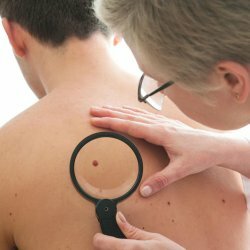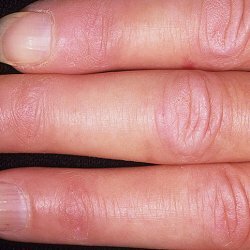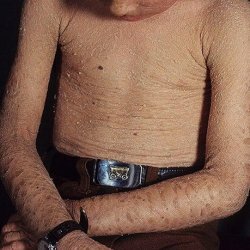Acne: what it is and how to get rid of it once and for all
Problems with the face, and in general with the skin, always hit a person's self-esteem and feelings hard.
Unpleasant pimples with abscesses look frankly repulsive, making you hate your reflection in the mirror.
So let's find out more about acne, what is it and how to treat it?
Content
- What is acne?
- Causes of acne
- How does acne form?
- How can acne be cured?
- Acne remedies
- Prevention of acne
- Related Videos
What is acne?
Hair grows on people's skin. It is they, or rather their glands, that form acne. The photo shows the structure of the hair and its placement in the skin.
It is the sebaceous sac that, when blocked by keratinized cells of the upper layer, leads to the formation of acne.

In women, acne is usually found on the back at the shoulder blades, on the shoulders, chest and face. In men, the most acne accumulates in the facial area.
They are generally more prone to acne due to the increased production of the sex hormone testosterone. It allows the glands to more actively secrete sebum, thereby making the situation worse.
Women should also pay attention to the resulting inflammation of the sebaceous glands, since after the age of 25 it may indicate violations in the work of internal organs, including problems with hormonal background.
The appearance of acne in adolescents is considered normal - this is evidence of the final formation the body, which is regulated by a large release of hormones, and therefore affects health skin (see. photo below).






In addition to the typical location on the chest, on the back of a woman and on the face of a man, acne can also appear on the head - more precisely, at the junction of bare skin and hair. This is a special type of acne that can be classified separately.
Causes of acne

The causes of acne in humans are varied, but fall into two general categories: those caused by external and internal factors.
External:
- Allergic reactions contribute to acne. It works like this: synthetic fabric with low-quality dye, bad cosmetics with allergens, cheap washing powders can cause irritation, which puts pressure on the psyche, forcing a person to comb affected areas. Scratches and cracks in the skin can cause an infection in the skin and cause acne.
- Bad habits. Smoking poisons the entire body, alcohol removes water, spoils the stomach, preventing the body from filling with useful substances, stimulates the work of the sebaceous glands. The habit of eating in fast food places, drinking carbonated drinks, eating a lot of fatty, high-calorie foods also contributes to the secretion of sebum, slags the body.
- Constant stress. This state implies the mobilization of all the resources of the body, its work at full capacity, which not only wears it out, but also makes fat more actively excreted.
- Long and regular sun exposure. Because of this, the body temperature rises, it secretes a large amount of sweat to stabilize it and prevent overheating, and at the same time the sebaceous glands work much more actively. In appearance, the skin becomes shiny and oily, the pores are open, therefore, when dust, dirt, and other irritants get on them, as a result, closed comedones are formed.
- Tight clothes. Tight-fitting tissues chafe the skin and prevent the skin from accessing oxygen and normal functioning, which also leads to acne.
- Lack of hygiene. Lack of daily water treatment leads to clogging of pores with dirt and keratinized skin particles, which means it contributes to the formation of acne.
Read also:Acne rosacea on the face: causes, symptoms, how to treat
Increased work of the sebaceous glands on the face and body can also be caused by internal factors:
- Endocrine system problems. Their consequence is a violation of the secretion of hormones, which can contribute to an increased secretion of sebum and the formation of comedones, acne.
- Pregnancy also contributes to the appearance of acne on the woman's back - this is due to hormonal disruptions caused by changes in the body while carrying a baby.
- The time of puberty, which is also characterized by the uncontrolled release of hormones during the final formation of the adult body.
- Diseases of the gastrointestinal tract, genitourinary system also lead to acne. The improper work of these organs ends with the fact that toxins are not excreted in their proper way and the body tries to get rid of them through perspiration, and this is a favorable environment for the formation of acne.
- Lack of vitamins, especially B5.
Internal factors mainly depend on hormonal stability, therefore, during periods when this risk factor is increased, it is worth being more attentive to your skin and maintaining its shape.
How does acne form?

Before thinking about treating acne on the face or other areas of the body, you need to understand how they appear and develop.
The "life" of a pimple is divided into three main stages:
- Problem arising. For one reason or another, the pores become clogged with sebum and form a comedone. Such appearances are absolutely painless and not always immediately noticeable. Usually, they are the ones that are ignored. They are of two types:
- Open ones are the usual black dots. They stand out vividly against the background of the skin. The pore is clogged, but not covered by the skin on top, so the fat comes into contact with oxygen and turns black.
- Closed. The pores fill with grease under the top layer of the skin and look like a slight swelling on the skin. Such formations have a milky hue and are especially invisible.
- In order for a pimple to appear, the comedone must become inflamed, that is, an infection gets into it. Depending on its type and location, acne may differ. Here are the main acne:
- The propinobacterium in acne breaks down fats and contributes to inflammation of the surrounding tissues. This leads to the formation of papules. Such acne can actively grow and take more serious forms;
- Clogged sebum may add staphylococcal infection, which contributes to the development of abscesses, or in another way - pustules. This is a severe form of acne that causes ugly scars to form after healing;
- Necrotizing acne is located at the base of the follicle, therefore it has serious consequences and scars that resemble healed smallpox. Also promotes pustule formation;
- The phlegmous variant of acne has a focus of inflammation already in the fat cells. After removing the pus, it heals for a long time and leaves strong scars;
- Nodular cystic acne is a network of deep, purulent pimples that have grown together. After they heal, noticeable "bumps" remain on the skin - cystic formations;
- There is a so-called lightning-fast form, which manifests itself as a result of a serious disruption of the body, especially the gastrointestinal tract. Pimples develop rapidly, develop into a pustule and form necrotic tissue. The consequences are visible and deep scars. In the overwhelming majority of cases, this form develops in young people, but girls can also be susceptible to this disease, which occurs in them in a very complex and painful form.
- After undergoing a course of treatment, scars characteristic of each type are formed on the skin. In milder forms, these are small, barely noticeable atrophic scars; in severe forms, they are clearly visible scars and formations.
Read also:Lichen planus in humans: causes, symptoms (photo), diagnosis and treatment
There is also a division according to the severity of acne:
- The mild form is the formation of open comedones;
- Closed comedones and papules are moderate acne;
- The severe form is a large number of pustules and papules.
Depending on the form of severity and causes of pimples, treatment and a specialist are selected. Small problems can be eliminated by a cosmetologist, and large affected areas should be treated by a dermatologist.
How can acne be cured?

Average, facial acne treatment and the body takes about six weeks.
The first noticeable results begin only after 4 weeks, and in complicated cases, they can last up to 4 months of active exposure to the damaged areas.
There are various drugs that are used to treat acne.
Acne remedies
Benzoyl peroxide. This agent is necessary to kill bacteria in the infected area. Refers to local treatment, effectively helps and is applied in the presence of acne and acne with acne.
If there are only the latter, the drug will not be effective. It is used in combination with other acne products. Available in many forms - gel, ointment, and so on.

Salicylic acid. It is needed to remove the upper, stratum corneum, which clogs skin cells. At the same time, the product also dissolves the plugs that have formed from the fat and cleans them.
Available in various forms and concentrations. It is less effective than other drugs and is well suited for prophylaxis during puberty.

Retinoids. Less publicized, but more effective than salicylic acid. Derived from vitamin A, they are used to remove comedones from the pores and resolve acne.
Effective in the presence of only acne or in combination with acne. Combines with antibiotics or benzoyl peroxide. It is worth considering that the remedy cannot be used during pregnancy.

Azelaic acid. Needed to fight bacteria and remove dead skin that clogs pores. It is used both independently and as part of other drugs. Available in gel and cream form.

Sulfur medicines. Helps get rid of acne inflammations. In the presence of pus, they are no longer effective. They increase the effectiveness of benzoyl peroxide, compared to other agents, they are quite useless and have an unpleasant odor.
Various antibiotics can also be used for acne. This can be both a local treatment and an effect on the entire human body. The first is used almost always in the presence of inflammation - it helps to fight the infection. The second is needed in extreme cases, when no other therapy has helped and it is necessary to start more active intervention during the course of the disease (usually this is already a cystic form).
Cortisone injections are given in an area of large skin lesions and help avoid surgery. They help to improve the appearance and, as a result, acne does not leave large scars. It is an anti-inflammatory steroid that can only be prescribed and administered by a doctor.
Read also:Neurodermatitis: symptoms and treatment
There are also certain treatments that can help reduce the cosmetic defect after acne has healed. They are prescribed by a doctor or beautician depending on the stage, complexity and type of the disease.
Prevention of acne

Having dealt with the concept of acne, what it is and how to treat it, it is worth mentioning the prevention of their occurrence.
It should be started from the beginning of adolescence - when the work of the sebaceous glands on the face and body is especially enhanced and the body cannot cope with the cleaning and regulation of fat in the pores.
Moreover, if acne has already appeared on the face, it is worth doing exactly the treatment, depending on the stage, either from a doctor or from a beautician.
Preventive measures:
- Pore cleaning. Since acne is formed due to blockage of hair follicles, you need to thoroughly cleanse the skin from keratinized particles. You need to do home scrubbing regularly (once or twice a week, depending on your skin type). This can be done only on non-inflamed skin, with a maximum of closed comedones, otherwise there is a risk of "spreading" the inflammation to unaffected areas through micro scratches.
- It is necessary to regularly cleanse the skin from dust and dirt that gets on it during the day. To do this, it is better to use cosmetic formulations that are suitable for the skin, since soap and running water from the tap dry it out and make the production of fat more active. It is important to wash off makeup at night.
- You should not wear tight clothes, allow scarves, collars and other tissues that can infect the affected areas of the face to touch, and further irritate the skin.
- During adolescence or with increased sweating, it is vital for healthy skin to maintain correct diet and drink plenty of plain, pure water without additional impurities, avoid fatty and spicy.
- You need to try to be less nervous and monitor the time spent in the open sun - a moderate tan will even help in the fight against acne, excess will only aggravate the situation.
- It is important to monitor the work of the stomach, to prevent dysbiosis, especially during increased risks - for example, when taking antibiotics.
Acne is not a fatal or life-threatening disease, but it strongly affects a person socially, can destroy a career and even life.
It is necessary from childhood to teach adolescents to take care of themselves or take up treatment and restoration of the skin at any age, because life without acne is much more beautiful.



